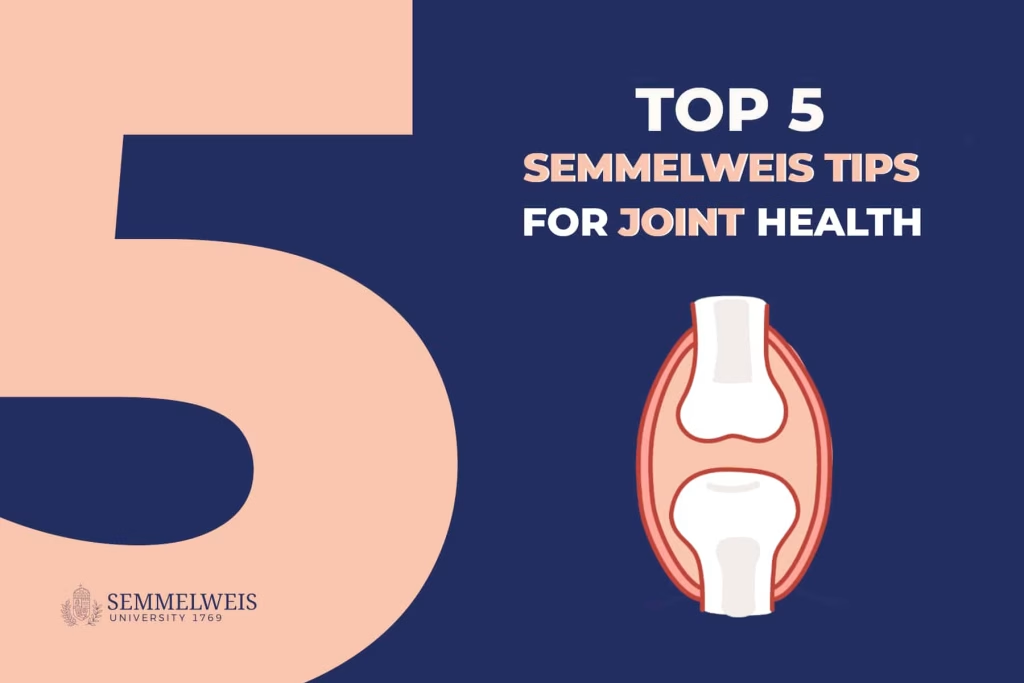
Introduction to Joint Health and Semmelweis University’s Expertise
Maintaining healthy joints is essential for comfortable movement, independence, and quality of life, especially as we age. With a focus on prevention and early intervention, Semmelweis University in Hungary offers valuable insights into how individuals can preserve joint health through everyday habits and lifestyle choices. Drawing from the expertise of orthopedic specialists at Semmelweis University, this guide summarizes practical tips to support joint function and reduce the risk of degeneration.
Understanding the Foundations of Joint Health
The Role of Joint Anatomy and Function
Healthy joints depend on several interconnected factors. Proper anatomical alignment ensures that the bones, ligaments, and muscles work together without undue strain. Regular movement helps maintain the mobility and strength of muscles and ligaments that stabilize joints. Adequate nutrition provides essential building blocks for cartilage and joint tissues, while avoiding injury and excessive stress reduces wear and tear. These factors work in unison to delay degenerative changes such as osteoarthritis, which is common after the age of 60.
Cartilage Preservation: The Key to Joint Longevity
Cartilage, the smooth tissue covering the ends of bones in joints, plays a pivotal role in absorbing shocks and enabling frictionless movement. Over time, cartilage naturally degrades—a process accelerated by environmental and lifestyle factors. Semmelweis University’s orthopedic experts highlight that cartilage has a lifespan of around 60 years, after which its deterioration becomes more evident, often accompanied by pain and stiffness. While irreversible, the progression of cartilage wear can be slowed by proactive measures.
Practical Strategies for Joint Health
1. Monitor and Maintain a Healthy Weight
Excess body weight is a major factor contributing to joint stress, particularly in weight-bearing joints like the hips and knees. Hungary experiences high rates of overweight and obesity, increasing the prevalence of joint complaints. Even a modest increase of five kilograms can significantly exacerbate joint damage, raising symptoms by up to 50%. Achieving and sustaining a healthy weight reduces unnecessary strain and supports joint longevity. Adopting a balanced diet and regular physical activity are vital components of weight management.
2. Engage in Regular and Gentle Exercise
Movement stimulates synovial fluid—the lubricating substance inside joints—that nourishes cartilage and maintains its elasticity. Inactivity leads to stiffness and degeneration, while overexertion can cause injury. Semmelweis experts recommend low-impact activities such as swimming, cycling, rowing, or using elliptical trainers. These exercises promote joint mobility, strengthen muscles, and help control weight. Warming up before workouts and stretching afterwards minimizes strain and prevents injuries. Remember, consistency is key: regular movement is more beneficial than sporadic intense activity.
3. Adopt a Cartilage-Enhancing Diet
Nutritional choices significantly influence cartilage health. Diets rich in unsaturated fatty acids, vitamin D, and calcium support joint tissue strength. Additionally, supplements containing glucosamine, chondroitin, hyaluronic acid, and MSM are popular for their proposed cartilage-strengthening effects. Although not a cure-all, combining proper nutrition with physical activity can slow cartilage deterioration and alleviate symptoms. It’s advisable to consult healthcare professionals to tailor supplements to individual needs, and to use them consistently over several months to observe benefits.
4. Be Vigilant About Joint Injuries and Seek Medical Advice
Injuries such as ligament tears and meniscus damage in the knee may not always be painful initially, but can lead to long-term problems if untreated. For example, micro-instability caused by untreated ligament tears can cause abnormal joint movement, speeding up cartilage wear. Regular medical check-ups and prompt attention to injuries or persistent joint pain are essential. Semmelweis University’s clinics emphasize early diagnosis and appropriate intervention—sometimes surgical—to prevent irreversible damage. Managing autoimmune and metabolic conditions like gout and rheumatoid arthritis is also crucial in preserving joint integrity.
5. Focus on Lifestyle Choices and Prevention
Beyond diet and exercise, other lifestyle factors influence joint health. Avoiding excessive repetitive movements, taking breaks during long periods of sedentary work, and using ergonomic furniture can reduce joint strain. Smoking cessation and limiting alcohol intake also benefit overall health, including joints. Semmelweis University’s preventive health programs encourage consistent habits that support lifelong joint function.
Making Joint-Friendly Choices Every Day
Preserving joint health requires a holistic approach that integrates proper anatomy, balanced nutrition, regular gentle activity, weight management, and timely medical consultation. Semmelweis University plays a vital role in advancing research and education on joint health, equipping individuals with practical knowledge to make informed lifestyle choices. Implementing these tips can significantly delay degenerative changes and help maintain mobility well into old age.
Apply to Semmelweis University with Expert Help
Interested in learning more about Semmelweis University’s programs? Fill out the form to receive personalized guidance from an expert counselor. You’ll gain support in selecting the right program, understanding admission requirements, and navigating the application process, helping you confidently start your academic journey in Hungary.

